Introduction:
Besides the few products from their very beginning, FiiO have always been known well for making portable headphone amplifiers and DAC-Amps with good specs and reasonable pricing.
Then they successfully started offering digital audio players (beginning with the original X3 that was way delayed, but eventually it was released and I was among the first people who purchased it) – but that is another story.
The Chinese audio company however has never stopped progressing – some might even say that they progress too quickly – and implementing new features and innovations into their products.
Starting with the
Q1 MkII DAC-Amp that really only shares the name with its predecessor, FiiO began to implement a digital volume control into their new product releases with “traditional” appearing volume potentiometers, and I have to say that this is something I value a lot, not only because I have suggested it multiple times in the past, but also because it eliminates the bad channel matching at low attenuation settings that traditional analogue potentiometer implementations have – great!
While
FiiO’s Q1 MkII DAC-Amp is a great little device on its own and offered at a very reasonable price, it isn’t alone in the Q product line – new is the
Q5, a truly feature-loaded DAC-Amp with a dual-mono implementation of its audio path, aptX Bluetooth and replaceable amplifier modules known from their
X7 and
X7 MkII digital audio players (it comes bundled with the AM3A module).
It is set to be FiiO’s flagship DAC-Amp, which seems plausible given the audio implementation and features.
How well does the Q5, positioned as FiiO’s flagship DAC-Amp, perform? Let’s find it out.
Full disclosure: The Q5 was provided to me free of charge as a sample for this very review.
My review is, as always and nonetheless, unpaid, as honest and unbiased as humanly possible, and reflects nothing but my own impressions, just like with the plethora of audio gear I own myself and have possibly reviewed and/or talked about as well. I wasn’t given any directions/guidelines, no matter how it would turn out.
Technical Specifications:
International price before Taxes: ~ $369.99
German/European Price: ~ €419
Full Specs:
http://www.fiio.net/en/products/83/parameters
Delivery Content:
As one (or at least I) would expect, FiiO’s flagship DAC-Amp comes with plenty accessories in its nicely designed box:
A protective storage pouch, a silicone pad for stacking, two rubber bands for stacking, a really nice looking screwdriver to remove the amplifier module, a USB cable for charging and DAC use, a 3.5 mm to 3.5 mm cable, one TOSLINK to 3.5 mm TOSLINK adapter, one coaxial to 4-pin 3.5 mm adapter and last but not least a lightning to USB cable for DAC use with a more recent iDevice.
You might have noticed that no micro USB OTG cable is included, which is because the Q5, just like the
Q1 MkII, is advertised with MFi certification but not for Android use, so compatibility with Android-based devices may and will be limited.
Aesthetics, Haptics, Build Quality:
The majority of FiiO’s most recent devices has got a quite unique and stylish, beautiful design, and I would say that this is also true for the Q5, although to a lesser degree compared to some other recent FiiO products such as the
X5 MkIII,
X7 MkII and
Q1 MkII.
Don’t get me wrong, the simple elegance of the Q5 and its understatement convey a classy spirit and I really like its black, textured pleather back panel, however I also think that the design looks a bit plain and boring compared to some of the several design prototypes’ elements (such as the pinstripe look that I really liked) – I just wish that there was a bit more going on at the large front panel, design-wise. Then again, FiiO made the design so that the amplifier modules for their X7 and X7 MkII still fit, and I highly applaud that. Still I personally think that the Q5 might age less well than the Q1 MkII that I honestly somehow find more attractive. I still find it good looking though.
By the way, there are the red design elements, recessed volume dial, pleather back panel and last but not least top side with the gain and bass switch as well as digital and analogue inputs as well as a line output that I find visually very well done and especially like.
- - -
Build quality is really good – the chassis is made of CNC-machined metal, just like the buttons and volume dial. The back panel is covered with textured black pleather whereas the front panel is brushed.
The included lightning cable is just awesome – short, but extremely soft and flexible.
The optional Leather Case (LC-Q5):
The LC-Q5 is currently only available in black leather, and I certainly wouldn’t mind to see more leather colours in the future.
Build quality-wise, it is fine and well-build, however I have to say that similarly as the iBasso DX200’s stock leather case, it doesn’t necessarily look or feel premium compared to what manufacturers such as Cowon, Astell & Kern, Miter or DIGNIS offer. It might well be because some of the DAC-Amp’s design elements and lines are covered since those aren’t sculpted into the case, making it look somewhat like an unemotional black brick, but it’s also due to it being more functional than elegant.
Nonetheless, key features such as the LED bar, the DSD light along with the button and volume dial, the top of the unit as well as the bottom of the amplifier module (even headphone plugs with a big shell still fit nicely) are cut out precisely and remain easy to reach. Last but not least the playback control buttons are still quite easy to feel as they’re embossed into the leather. And the case fits like a glove.
To me, it is more of a protective than a stylish or premium appearing leather case (I definitely like the appearance of the Q5 better without the case). So yeah, it does its job just fine and I would probably still get it for portable and semi-portable (=stacking or desktop listening in my case) use even though it doesn’t convey the luxuriousness of other leather cases I know.
Ports, Buttons/Switches, Features:
The Q5 really offers pretty much all what you need in terms of inputs, some of which are achieved by shared sockets and included adapter cables: a line input, coaxial input, TOSLINK input, USB DAC input (the amazing part about this one is that it works driver-less with Windows 7/8/10 while holding down the “previous” track control button while connecting the DAC-Amp to the computer) as well as Bluetooth and a separate USB input solely for charging the device (conveniently, it won’t draw any power from the source with an implementation like this, however it also means that there are two USB input sockets for two different purposes – that’s why an implementation similar to my Leckerton UHA-6S.MkII that has a switch that lets you disable USB charging would have probably been an even more elegant solution). It’s also got a line output and of course replaceable amplifier modules, so people who calling it the “Swiss army knife of DAC-Amps” are quite right.
Since the bundled AM3A module offers both unbalanced 3.5 mm TRS and balanced 2.5 mm TRRS sockets, that part is covered too.
What I don’t like about the amplifier modules is however that their screws have to be removed completely in order to take off the module – in this regard, iBasso Audio’s amp module screw implementation is superior.
Additionally, the Q5 also offers a DSD light, separated on/off button and volume control wheel (wherefore the volume level is “stored”), aptX Bluetooth, a light bar that indicates the mode the Q5 is in, playback control buttons (for Bluetooth connection), as well as gain and bass boost switches.
Some criticism: FiiO has an app that lets you customise things like automated shutoff, the digital filter, L/R balance and the LED bar. However, it is, at the moment, only available for devices running iOS 8 and up, and not distributed to Android, Windows, Mac or iOS versions below iOS 8 at the moment, which is a pity.
FiiO is however, as they assured me, working on an Android version of the FiiO Music app, and at the time of writing these lines it is already in the phase of internal beta testing, so it should hopefully come out soon.
Some more (and more serious) criticism: while the line/coax/optical input socket is super convenient, it unfortunately is somewhat loose with some cables loose – the other sockets are definitely tighter, and the optical socket on the iBasso DX200 and DX150 or HiFime 9018d is tighter as well. Therefore it can happen that the cable that is plugged into this socket gets removed on the go or even if you are not paying attention for a moment during desktop use. Some cables seem to fit tighter though and cannot be unplugged unintentionally, such as some cables I soldered myself that are using 3.5 mm ViaBlue plugs.
- - -
Yup, that’s quite a lot of features, and I think I covered everything in this paragraph. Forgive me if I haven’t.
Turns out I have and didn’t mention the reset pinhole on the left hand side of the device.
Sound:
It should be noted that all measurements, impressions and comparisons were done exclusively using the
included AM3A amplifier module in single-ended use. The other offered modules may (and likely will, given their specs) perform differently. The used digital filters in DAC mode were always sharp roll-off or short delay, sharp roll-off.
Volume Control:
A fully analogue implementation of the volume control usually has the disadvantage that channel matching in the low potentiometer adjustment range is pretty bad and that one side is quieter than the other until you raise the volume. That is why I have developed a bit of hatred towards fully analogue volume control implementations over the years.
Fortunately, just like the FiiO Q1 MkII, the Q5, also it appears like it might, doesn’t have a typical analogue volume control implementation – the pot that you operate controls the volume level on the digital domain wherefore channel imbalance is completely avoided, even if the potentiometer is in the very low adjustment range. Indeed, it is great to see an idea I have recommended to FiiO multiple times in the past to be finally implemented. I just love it.
What’s great about the Q5 is also that the power button and volume control are separated wherefore the last volume setting is stored.
The Q5 has got 256 digital volume steps more than the
Q1 MkII, resulting in an even somewhat more precise and smoother operation than what the Q1 MkII already offers. Not that one would really notice this advantage though.
One advantage one immediately notices though is that the Q5 won’t click when the bass boost is enabled or disabled whereas the Q1 MkII does.
The Volume is almost muted during the first two, three mm after turning the DAC-Amp on, but then suddenly increases immediately although increments are smooth and gradual above that threshold – in the latter way, the Q5 feels just like a regular device with a traditional analogue potentiometer, but with the advantages of the digital attenuation (ideal channel matching), and this is probably exactly what FiiO wanted to go for.
(Very personally, as someone who has come from preferring analogue attenuation to clearly preferring fully digital attenuation, I would still prefer a small screen and volume buttons or a pot with infinite turns and probably steps coupled with a small screen for the sake of even higher precision and always getting the exact volume setting I want, ideally with 256 steps à 0.5 dB in total, but I can totally see why FiiO went the way they did. Very personally, I also wouldn’t have minded an even slightly lower starting volume at times in order to sometimes being able to listen at super quiet volume levels just above the audible threshold with very sensitive in-ears – but that’s just me and for regular quiet listening even with very sensitive in-ears, the volume scaling is fine. Still I think that this (a gain reduction) might be an interesting feature/setting to add to the FiiO Music app that is required to access the Q5’s settings.)
Frequency Response:
One of the most basic and fundamental things an audio device should have is a flat unloaded frequency response in the important range of 20 to 20000 Hz. While it is anything but sorcery to achieve this in modern days, some (however mainly inexpensive and rather no-name) audio devices still fail to achieve this very basic thing.
So let’s see how the Q5 measures (in single-ended use) when used as a…
… pure Amp (Line In):
 … DAC-Amp (USB in):
… DAC-Amp (USB in):
 … DAC-Amp (Optical in):
… DAC-Amp (Optical in):
 … pure DAC (USB in -> Line Out):
… pure DAC (USB in -> Line Out):
 … Bluetooth DAC:
… Bluetooth DAC:

As we can see, no matter what signal path (analogue or digital) is used, the Q5 basically always puts out a desirably flat signal (probably useful hint: at first I was disappointed to see the USB DAC filters acting too aggressively (starting too early), but then I fortunately quickly figured out that the default sampling rate was mismatched in the Windows audio settings. Setting it accordingly solved the issue and led to the desirably flat response seen above).
The Q5 additionally also offers an additional bass boost:

As one can see, it adds ca. 5.3 dB of broad bass boost below 100 Hz.
Output Impedance:
Even when having a flat frequency response without load or with a simple load (such as a headphone that has got the same impedance over its entire frequency response), things are getting quite a bit more difficult with most multi-driver in-ears that have got more than just one driver and a crossover circuit that causes the in-ears’ resistance to vary along with their frequency response.
If the audio device’s headphone output doesn’t have a low output impedance, the in-ears’ frequency response and therefore heard tonality will be skewed and they will (depending on the player’s output impedance and the in-ears’ specific impedance response) sound more or less different compared to when driven by an audio player that has got a low output impedance.
To maintain an unaltered sound even with low impedance multi-driver in-ears, it is therefore best to have an audio device that has got an output impedance of around (or ideally even less than) 1 Ohm.
This is what the FiiO Q5 puts out when connecting a critical, low impedance multi-driver in-ear to its single-ended output:

The connected load was my
Ultimate Ears Triple.Fi 10, an in-ear that is among the more source-picky species of its kind and changes its sound rapidly as the player’s output impedance climbs (yes, it even makes a perfectly low output impedance of 0.1 to 0.5 Ohms visible). I therefore pretty much always use it for measuring the frequency deviation compared to a simple load. Based on this, the output impedance can be calculated.
The measured deviation in combination with the FiiO AM3A is still on the more reasonable side and can be calculated to be around 1.3 Ohms, which is still a fairly good value and proves that the player can drive the vast majority of multi-driver in-ears without (or with only slightly, which is the case for divas such as the Triple.Fi 10 or
Shure SE846) altering their sound unlike players that have a rather high/higher output impedance. This also backs up FiiO’s specs that state around 1.2 Ohms.
While that value of around 1.3 Ohms is reasonable, it can however already lead to some slight tonal changes with some really low impedance in-ears with a high impedance swing (e.g. Triple.Fi 10,
Andromeda, SE846), so for the reference flagship device the Q5 is supposed to be, I would wish for an even lower output impedance below 1 Ohm, closer to the 0 Ohm perfection (hint hint, AM1).
I didn’t perform any output impedance measurements of the balanced output, but the spec stated by FiiO spears rather realistic and there’s no reason to not believe in it given FiiO’s previous honesty with their specs.
Hiss:
As someone who is quite sensitive to hearing hiss when it is present and as someone who is also using many sensitive and some very sensitive in-ears such as the
Shure SE846,
Ostry KC06A or
Pai Audio MR3, three models that are real “hiss-magnets”, having an audio device with as little audible hiss as possible has always been an important thing to me. The destination of perfection, a hiss-free audio player in combination with super sensitive in-ears, was what I could reach with my
iBasso DX90, the
Plenue 2, as well as the
Luxury & Precision L3 and
L3 Pro, though the L & P players don’t have the ideal output impedance for every kind of in-ear. And devices such as the
iBasso DX200 with its stock amplifier module came very very close to it.
Using the Q5, regardless in what mode, the amount of audible hiss with extremely sensitive in-ears such as my Shure SE846, Pai Audio MR3 and the Ostry KC06A is fortunately on the quiet side and quite faint, quite close to being not present at all. However, it is ultimately still not as quiet as my fantastically quiet iBasso DX90, Leckerton UHA-6S.MkII or the Cowon Plenue 2. It also hisses very slightly more than the iBasso DX150 or DX200, and is also a hair less quiet than the FiiO Q1 MkII (line in). Nonetheless it is among the best devices on the market in this regard and slightly quieter than the popular Chord Mojo that I own as well, or my Apple iPhone 4, but for perfect reference, and the Q5 is designed as a reference device, I would wish for even more quietness during quiet passages using extremely sensitive in-ears.
Grade: Reference A--/B++; close enough and among the best devices, but not 100% there with extremely sensitive in-ears.
Subjective perception of Transparency, Details and Soundstage…
… in Wired Mode (Line In, TOSLINK In, USB DAC):
Now to the quite subjective part of my review. My opinion and experience regarding the perceived “character” and “transparency” of source devices and amplifiers is this one: there can be an existing audible difference between various devices, but it should definitely not be overrated – simply because the basic character of a headphone won’t be completely changed (if the circuit follows a clean design philosophy and the output is load-stable), but sometimes rather slightly “shaped” and is usually very subtle in many cases and is (in most cases) just slightly present (if even there) and not “huge” or like “totally different classes” or “night and day”.
DAPs, DACs and Amps are also no music instruments and don’t “extend further” in the lows, don’t have “more bass and warmth” and don’t have “less mids” when compared unless their measured sound output says otherwise – and fortunately there are only very few devices that don’t have a flat output nowadays.
I am not a fan of exaggerations and hyperboles here because as long as the objectifyable parameters of an audio player are neutral and not too shabby (loaded frequency response, distortion, crosstalk, dynamic range, noise, …), the audible difference, if there is any, will be quite small at best if two devices are compared with proper volume matching that cannot be done by ear but only with instruments, since even small differences in loudness can be perceived as a technical advantage by our ear and brain.
A more detailed, German article written by me concerning the “audible difference between comparable audio devices, if there is any”, can be found here: […]
So let’s go on with my subjective impressions and observations (for this critical listening, I mainly used my
UERM,
Audio Technica ATH-IM03,
Etymotic ER-4S,
Audeze LCD-X as well as the
NocturnaL Audio Atlantis and
Fidue SIRIUS in single-ended mode. I also used a few more headphones and in-ears from different price and performance ranges for listening but more for personal enjoyment than for the sake of critical listening and comparisons. The main DAC/source for the Q5 in use as a pure amplifier was the
iBasso DX200 with the stock AMP1 module’s line output whereas my PC served as digital source for USB and TOSLINK input:
First and foremost, I’m happy to report that the Q5’s sound quality is basically identical regardless of what wired analogue or digital input you select (there is a minimal difference with the Q1 using super sensitive in-ears due to slightly different “intensities” of hissing).
The main advantage, besides the replaceable amplifier modules and even more features, you get with the Q5 over the Q1 MkII is a tighter sound. While the Q1 MkII is a great product on its own, it can, for whatever reason, sound a bit soft (/”mellow”) with high quality in-ears. Not so the Q5 that sounds just as tight, clean and transparent as an impeccable audio device should. Not a night-and-day-difference, but the slightly softer presentation can be noticeable with sensitive in-ears. Not really with full-sized headphones though where it makes little to no difference, probably unless you’re driving the DAC-Amp to its limits.
So it sounds just as tight, clean and transparent as it should be. Period. And that would justify that FiiO positions it as flagship device.
Using the analogue inputs, the perceived “timbre” is neutral to my ears – the (frequency response and distortion) measurements are anyway. Just flat and neutral, unlike devices such as the
Chord Electronics Mojo or
iBasso DX80 that measure flat as well but appear subjectively a little “smoother”/”richer”/”less aggressive” sounding – not that it would be an exaggerated night-and-day-difference though.
Spatiality with in-ears is good and the Q5 with its AM3A module “sounds” rather spacious, falling somewhere between the iBasso AMP1 and AMP6, sounding a bit more spacious compared to the Q1 or AM1 module. Since it’s just a nuance and not a large difference in absolute terms, as it wasn’t to be expected otherwise anyway, there’s no real need to go into further nonsense detail.
The sphere “created” by the Q5 also appears round with equal amounts of width as well as depth (with my beloved iBasso DX90, I get the feeling of a stage presentation that is somewhat more wide than deep – but again, it’s tendentially just a nuance).
- - -
Together with the precise digitally controlled volume and very low (although just a step below perfect) noise floor with super sensitive in-ears, this guarantees for a lot of carefree listening pleasure.
And all in all, there are also reasons why I see the Q5 standalone combination as superior to my Chord Mojo, such as the more precise volume control (finer steps), ability to listen more quietly, lower noise floor, constant output impedance, higher versatility and lower price.
… in Wireless Mode (Bluetooth – Apple iPhone 4, Apple iPhone 7, Hidizs AP200):
Very nicely, FiiO has implemented the Bluetooth path really well, as there is no added noise or other undesired stuff going on even when connecting super sensitive low impedance in-ears to the Q5. The heard signal remains just as clean as with any other connected cable source, which is extremely good to hear.

Linearity over Bluetooth is flawless, as long as the source device transmits a linear signal over Bluetooth. But what about transparency/general audio quality? Well, that ultimately depends on the device that transmits the Bluetooth signal. While some SBC sources can show some variance when it comes to audio quality (my Laptop’s output Bluetooth quality is garbage, for example), portable Apple devices that transmit the AAC codec as well as sources such as the Hidizs AP60, AP200, BlackBerry Q10, Apple iMac, MacBook Pro, MacBook Air and several modern high-end smartphones that transmit aptX should sound identical (at least the ones that I have tested so far, for example with the Mass Fidelity Relay, a really good stationary Bluetooth DAC that was the first Bluetooth device to sound audibly transparent to me in a blind test, did and didn’t show any quality or sound differences).
So, how audibly transparent is the Q5? When the aptX or AAC codec is transmitted, I would call it audibly transparent – as in not being able to tell the difference to a wired transmission. In that way it is equal to the Mass Fidelity Relay I just mentioned. The only thing that would hinder me from using Bluetooth more frequently really is just my mental border. Other than that – there is no area where I see (or better: hear) a disadvantage of the Q5’s Bluetooth quality. And the sound quality is already really good with good SBC streaming sources, with only slightly compressed highs and just a slight loss of perceived spaciousness.
Finally another audibly transparent Bluetooth audio device, and this time it’s also portable.
FiiO AM1 (a.k.a. “Wait, this Review isn’t over yet!”):
As mentioned and obvious, all amplifier modules available for the FiiO X7 and
X7 MkII can be used with the Q5. Thus, also the AM1 module that is targeted towards very sensitive in-ears. Unfortunately, this very module was, to my surprise (and sadness), meanwhile discontinued since only relatively few people were interested in it compared to the other modules.
No, this right here isn’t going to be a full review of the AM1 – I’ll save that for later. Nevertheless this short-ish paragraph will contain all the info that will also be available in the standalone-review. And the main reason why I included this paragraph right here is to tell you why getting the AM1 module in addition to the already included AM3A might be definitely worth it for your specific in-ears.
The AM1 module is the least powerful module out of FiiO’s interchangeable AM range, and this was done on purpose. As a result, it won’t only somewhat increase battery life, but also output less power into a higher Ohm load than the other modules even though it’s still plenty powerful for most needs and full-size headphones. You may ask yourself why this might be an advantage – well, there are sensitive/very sensitive multi-BA in-ears, and there are extremely sensitive low impedance multi-BA models (and very few dynamic driver models that fall into this category, such as the Ostry KC06A). Even though the Q5 (thankfully) has a digitally realised volume control implementation that guarantees perfect channel matching even when the pot is at a very low setting, having an amplifier module with less power output can be beneficial for the latter sort of in-ears since it increases the low level volume control precision by a hair.
Then there’s the output impedance, the biggest factor – while the AM3A’s ~ 1.3 Ohms are still reasonably low and sufficient for the majority of multi-BA in-ears and don’t affect their frequency response, some low impedance multi-BA divas with a quite strong impedance swing in their impedance response, such as the Shure SE846 and
Campfire Audio Andromeda, can already show some slight audibly (and definitely measurable) frequency deviation in some parts compared to an output with ~ 0.2 Ohms output impedance. As a result, if you are an output impedance perfectionist with low impedance in-ears with a strong impedance swing, I think that the AM1 will fill you with greater inner pleasure and satisfaction (it definitely does in my case) as it is closer to 0 Ohms output impedance perfection.
Both modules perform pretty much equally well when it comes to hiss performance with super sensitive in-ears – in this regard, the difference is negligible (the AM1 is ever so minimally quieter by a μ).
The only minor disadvantage is that you might lose a hair of transparency and spatiality using sensitive in-ears compared to the AM3A – but the difference is small enough to not matter to me and that I consider it negligible.
- - -
So when should you get the AM1 over the AM3A? If you are an output impedance perfectionist and have got low impedance in-ear divas with a high impedance swing that already react to output impedance figures that are usually good enough for most other multi-driver in-ears that wouldn’t show slight tonal changes yet. So guess what, I personally consider the Q5 with the AM1 module the actual, true “reference flagship” combination.
Conclusion:
The FiiO Q5 DAC-Amp is designed as a super versatile, competitively priced Swiss army knife perfectionist flagship. And it deserves this status. Well, almost – because I wouldn’t go as far to call it perfect. Yes, it might hold the flagship status as in being FiiO’s most expensive and versatile DAC-Amp at this time, and its performance is very good, however a step below perfection in some areas: The bundled AM3A module’s output impedance (~ 1.3 Ohms) could be lower for reference flagship status (although it is reasonably low on its own, it is only “good” but not “perfect” compared to the 0 Ohm perfectionist target) (hint, hint, AM1), and for absolute perfection with the most sensitive low impedance in-ears on the market, a minimally quieter noise floor with empty audio files/in quiet passages would make it even more perfect (it’s very close and one of the best devices on the market, but slightly behind the best, although you will almost not hear the faint hissing anymore when you are using extremely sensitive in-ears as soon as the music starts playing quietly).

So yup, I basically only found two “flaws” – the output impedance (can be perfected by getting the (unfortunately discontinued) AM1 module) and noise floor (that is really low, although just a little higher than perfectly quiet reference bliss). Other than that, and generally, the Q5 is a super versatile, clean and transparent sounding device that offers a lot and doesn’t cost much. And it sounds great over Bluetooth.














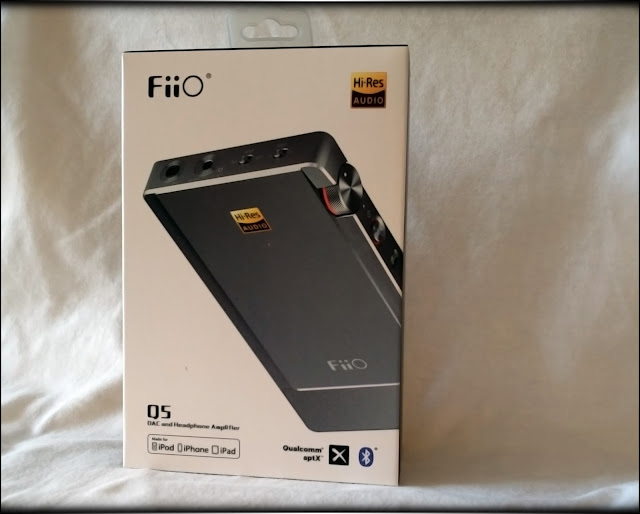











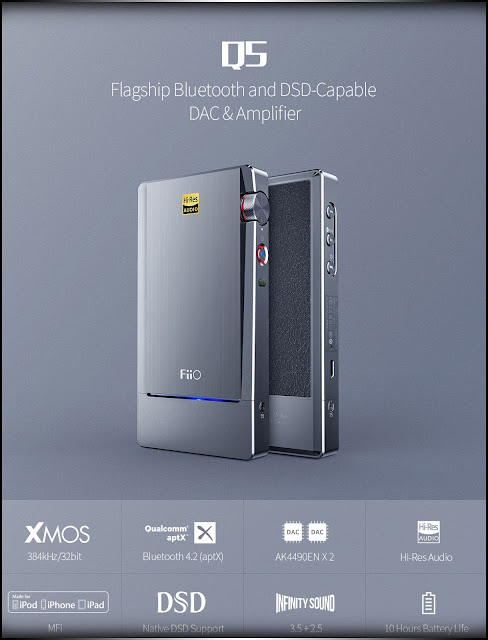

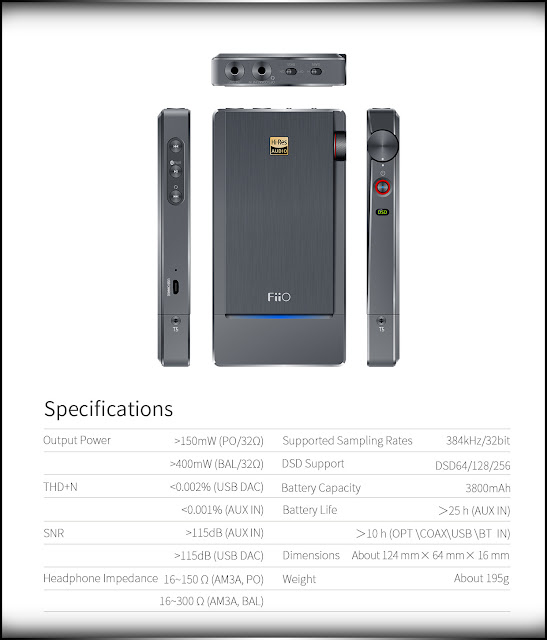









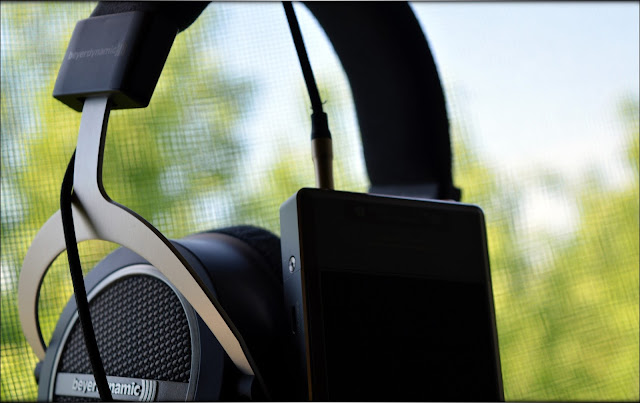




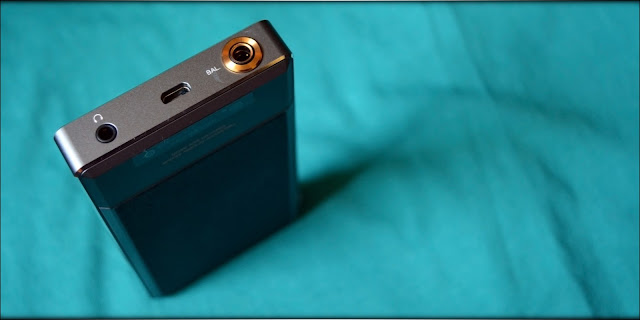
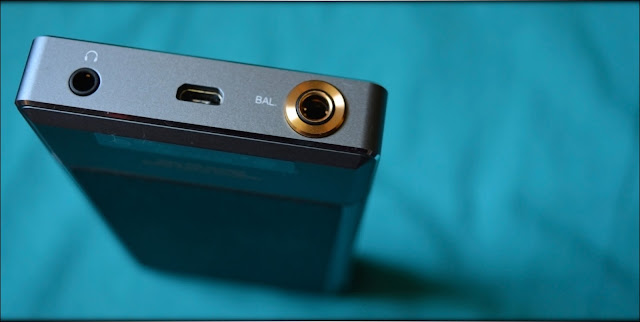




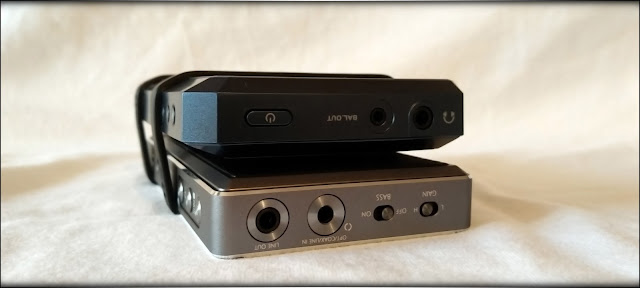














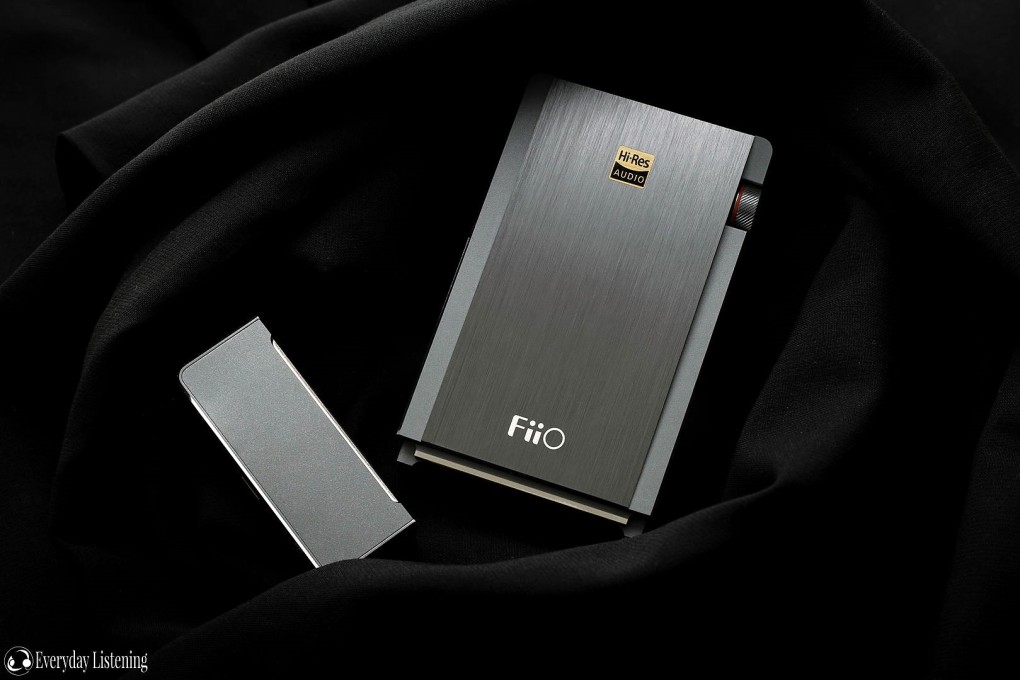

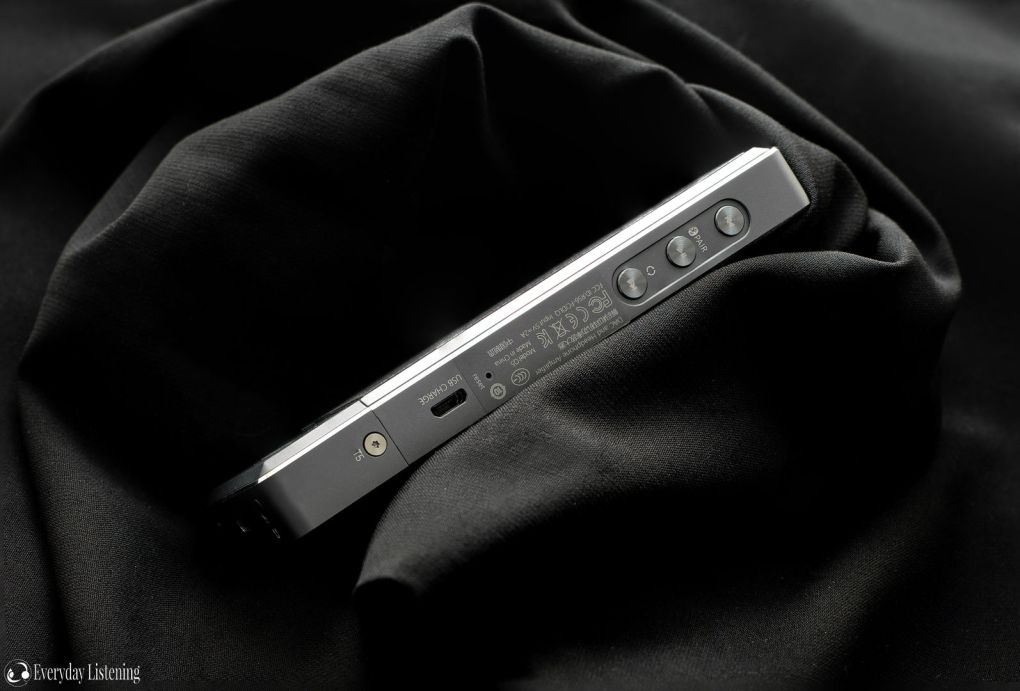
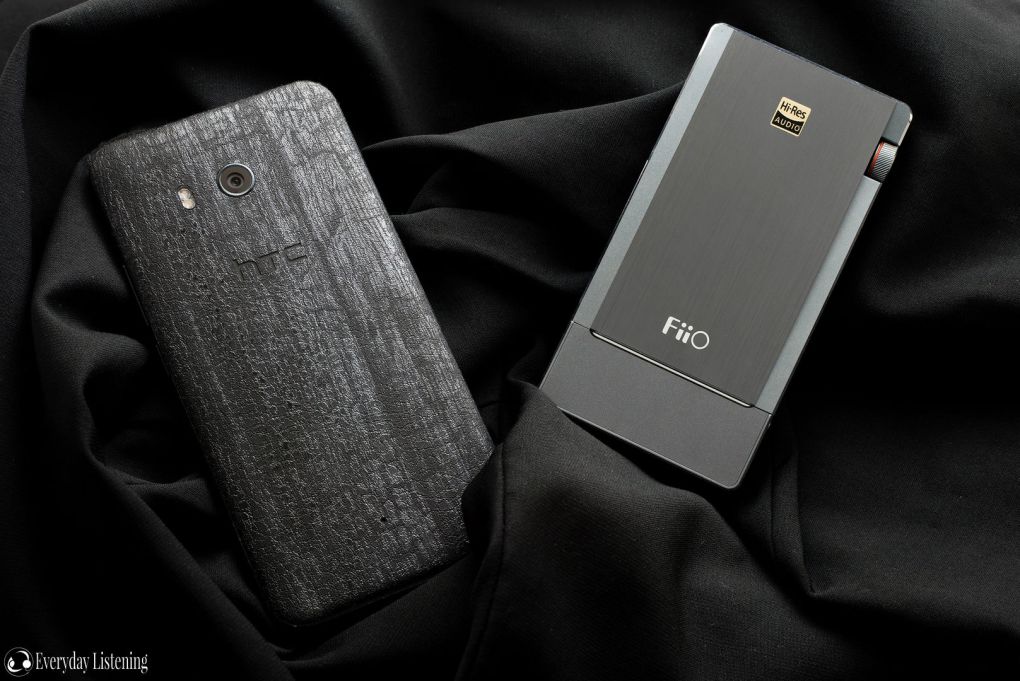








 …)
…)































































































